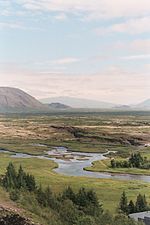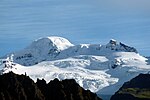This article lists the sites registered with World Heritage in Iceland.
Understand
Iceland ratified the Convention for the Protection of World Cultural and Natural Heritage on December 19, 1995. The first protected site was inscribed in 2004.
Iceland has 3 sites listed on the World Heritage, 1 cultural and 2 natural.
Listing
The following sites are listed as World Heritage:
| Site | Type | Criterion | Description | Drawing | |||||||||||||||||||||
|---|---|---|---|---|---|---|---|---|---|---|---|---|---|---|---|---|---|---|---|---|---|---|---|---|---|
| 1 Thingvellir National Park | Cultural | (iii), (vi) | Þingvellir (Thingvellir) is the open-air site of the Althing, a plenary assembly representing all of Iceland, which was held from 930 until 1798. During an annual session that lasted for a fortnight , the assembly drew up laws conceived as pacts between free men and settled disputes. For the Icelandic population, the Althing is a place with deep historical and symbolic resonances. The ensemble includes the Þingvellir National Park as well as the remains of the Althing itself, fragments of some 50 peat and stone huts. There should remain vestiges of the Xe century buried underground. The site also includes vestiges of agricultural activity during the XVIIIe and XIXe centuries. The park is a testimony of the landscaping over nearly a millennium. |  | |||||||||||||||||||||
| 2 Surtsey | Natural | (ix) | Surtsey, located approximately 32 km south of the Icelandic coast, is a new volcanic island created by eruptions which took place from 1963 to 1967. Protected from its birth, it provides the world with a truly remarkable natural laboratory. Free from human interference, Surtsey is a unique and ongoing source of information about the colonization of a new land by plant and animal life. Since they began to observe the island in 1964, scientists have seen the arrival of seeds carried by sea currents, the emergence of molds, bacteria and fungi. A first vascular plant followed in 1965, soon joined by others. Ten species became established during the first decade. In 2004, there were 60, with 75 bryophytes, 71 lichens and 24 fungi. To date, 89 species of birds have been recorded in Surtsey, of which 57 also breed elsewhere in Iceland. The island's 141 ha are also home to 335 species of invertebrates. |  | |||||||||||||||||||||
| 3 Vatnajökull National Park | Natural | (vii) | The site, which covers more than 1,400,000 ha, is an emblematic volcanic region. It has ten central volcanoes, eight of which are subglacial. Two of the latter are among the most active in Iceland. The interaction between volcanoes and the fissures that underlie the Vatnajökull ice cap takes different forms, the most spectacular of which is jökulhlaup: a sudden flood caused by the rupture of a glacier's margin during an eruption. This recurring phenomenon reveals unique sand plains in the world, river networks and rapidly changing canyons. The volcanic areas are home to endemic groundwater fauna that survived the Ice Age. |  | |||||||||||||||||||||
Criteria legend
| |||||||||||||||||||||||||
